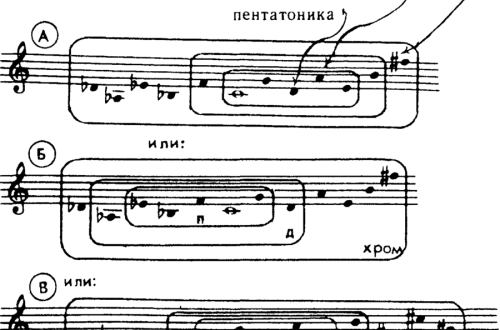What is tonality?
Contents
Let’s find out today what tonality is. To impatient readers I say right away: key – this is the assignment of the position of a musical scale to musical tones of a certain pitch, binding to a specific section of the musical scale. Then don’t be too lazy to figure it out thoroughly.
You’ve probably heard the word “” before, right? Singers sometimes complain about inconvenient tonality, asking to raise or lower the pitch of the song. Well, someone may have heard this word from car drivers who use the tonality to describe the sound of a running engine. Let’s say we pick up speed, and we immediately feel that the engine noise becomes more piercing – it changes its tone. Finally, I’ll name something that each of you has certainly encountered – a conversation in a raised voice (the person simply started yelling, changed the “tone” of his speech, and everyone immediately felt the effect).
Now let’s return to our definition. So, we call tonality musical scale pitch. What frets are and their structure is described in detail in the article “What is a fret”. Let me remind you that the most common modes in music are major and minor; they consist of seven degrees, the main of which is the first (the so-called tonic).
Tonic and mode – two most important dimensions of tonality
You’ve got an idea of what tonality is, now let’s move on to the components of tonality. For any key, two properties are decisive – its tonic and its mode. I recommend remembering the following point: key is equal to tonic plus mode.
This rule can be correlated, for example, with the name of tonalities, which appear in this form: . That is, the name of the tonality reflects that one of the sounds has become the center, tonic (first step) of one of the modes (major or minor).
Key signs in keys
The choice of one or another key for recording a piece of music determines which signs will be displayed at the key. The appearance of key signs – sharps and flats – is due to the fact that, based on a given tonic, a scale grows, which regulates the distance between degrees (distance in semitones and tones) and which causes some degrees to decrease, while others, on the contrary, increase.
For comparison, I offer you 7 major and 7 minor keys, the main steps of which are taken as the tonic (on the white keys). Compare, for example, tonality, how many characters are in and what are the key characters in, etc.
So, you see that the key signs in B are three sharps (F, C and G), but there are no signs in B; – a key with four sharps (F, C, G and D), and in only one sharp in the key. All this is because in minor, compared to major, low third, sixth and seventh degrees are a kind of indicators of the mode.
To remember what the key signs are in keys and never get confused by them, you need to master a couple of simple principles. Read more about this in the article “How to remember key signs.” Read it and learn, for example, that sharps and flats in the key are not written haphazardly, but in a certain, easy-to-remember order, and also that this very order helps you instantly navigate the whole variety of tonalities…
Parallel and eponymous keys
It’s time to find out what parallel tones are and what the same keys are. We have already encountered the keys of the same name, just when we were comparing major and minor keys.
Keys of the same name – these are tonalities in which the tonic is the same, but the mode is different. For example,
Parallel keys – these are tonalities in which the same key signs, but different tonics. We also saw these: for example, a tonality without signs and also, or, with one sharp and also with one sharp, in one flat (B) and also in one sign – B-flat.
The same and parallel keys always exist in the “major-minor” pair. For any of the keys, you can name the same name and parallel major or minor. Everything is clear with the names of the same name, but now we’ll deal with the parallel ones.
How to find a parallel key?
The tonic of the parallel minor is located on the sixth degree of the major scale, and the tonic of the major scale of the same name is on the third degree of the minor scale. For example, we are looking for a parallel tonality for: the sixth step in – note , which means a tonality that is parallel Another example: we are looking for a parallel for – we count three steps and get a parallel
There is another way to find a parallel key. The rule applies: the tonic of the parallel key is a minor third down (if we are looking for a parallel minor), or a minor third up (if we are looking for a parallel major). What a third is, how to construct it, and all other questions related to intervals are discussed in the article “Musical Intervals.”
To sum up
The article examined the questions: what is tonality, what are parallel and eponymous tonalities, what role do tonic and mode play, and how key signs appear in tonalities.
In conclusion, another interesting fact. There is one musical-psychological phenomenon – the so-called color hearing. What is color hearing? This is a form of absolute pitch where a person associates each key with a color. Composers N.A. had color hearing. Rimsky-Korsakov and A.N. Scriabin. Perhaps you too will discover this amazing ability in yourself.
I wish you success in your further study of music. Leave your questions in the comments. Now I suggest you relax a little and watch a video from the film “Rewriting Beethoven” with the brilliant music of the composer’s 9th symphony, the tonality of which, by the way, is already familiar to you.
“Rewriting Beethoven” – Symphony No. 9 (amazing music)



